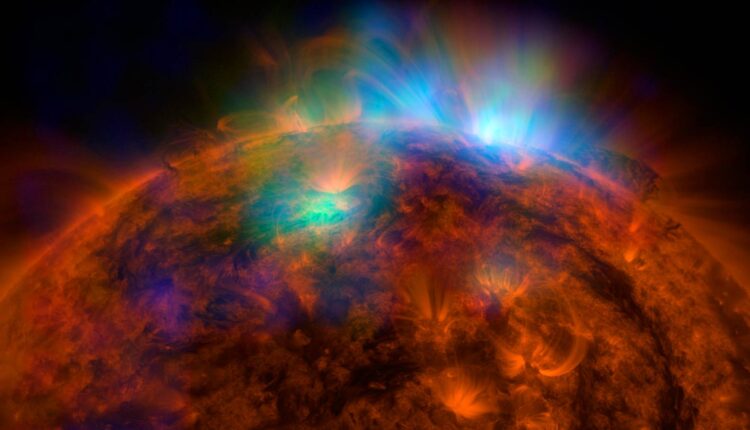NASA’s NuSTAR Telescope discovers mysterious light on the sun

Scientists may be able to explain why the sun’s outer atmosphere, known as the corona, can reach more than a million degrees and is at least 100 times hotter than its surface with the aid of images from NASA’s Nuclear Spectroscopic Telescope Array (NuSTAR) that have discovered mysterious light displays on the sun.
The sun’s radiation radiates outward from its center, which has baffled scientists. In a fire, where the air is 100 times hotter than the flames, it is comparable.
Even on a sunny day, the full spectrum of the sun’s light is invisible to human eyes. The NuSTAR images show other types of this hidden light, including the high-energy X-rays released by the hottest materials in the Sun’s atmosphere.
Given that numerous solar observatories can observe large bursts of heat, light, and particles known as flares, NASA hypothesizes that nanoflares, tiny eruptions in the sun’s atmosphere, may be the source of the corona’s heat.
The space administration noted that even though nanoflares are noticeably less frequent occurrences, both flare types emit material that is even hotter than the corona’s mean temperature.
Read Also: First ICESCO forum on “Women and Sport” is held in Rabat
The frequency of nanoflares may be much higher than that of regular flares, possibly high enough to heat the entire corona.
It explained on its official website that infrequent regular flares don’t keep the corona at the high temperatures astronomers observe.
The most recent images of the light show were taken while the NASA’s Parker Solar Probe, which is traveling faster than any other spacecraft in history, was making its 12th close approach to the Sun, or perihelion.
When researchers use NuSTAR to observe Parker’s perihelion crossings, they can connect distantly observed activity in the Sun’s atmosphere with

